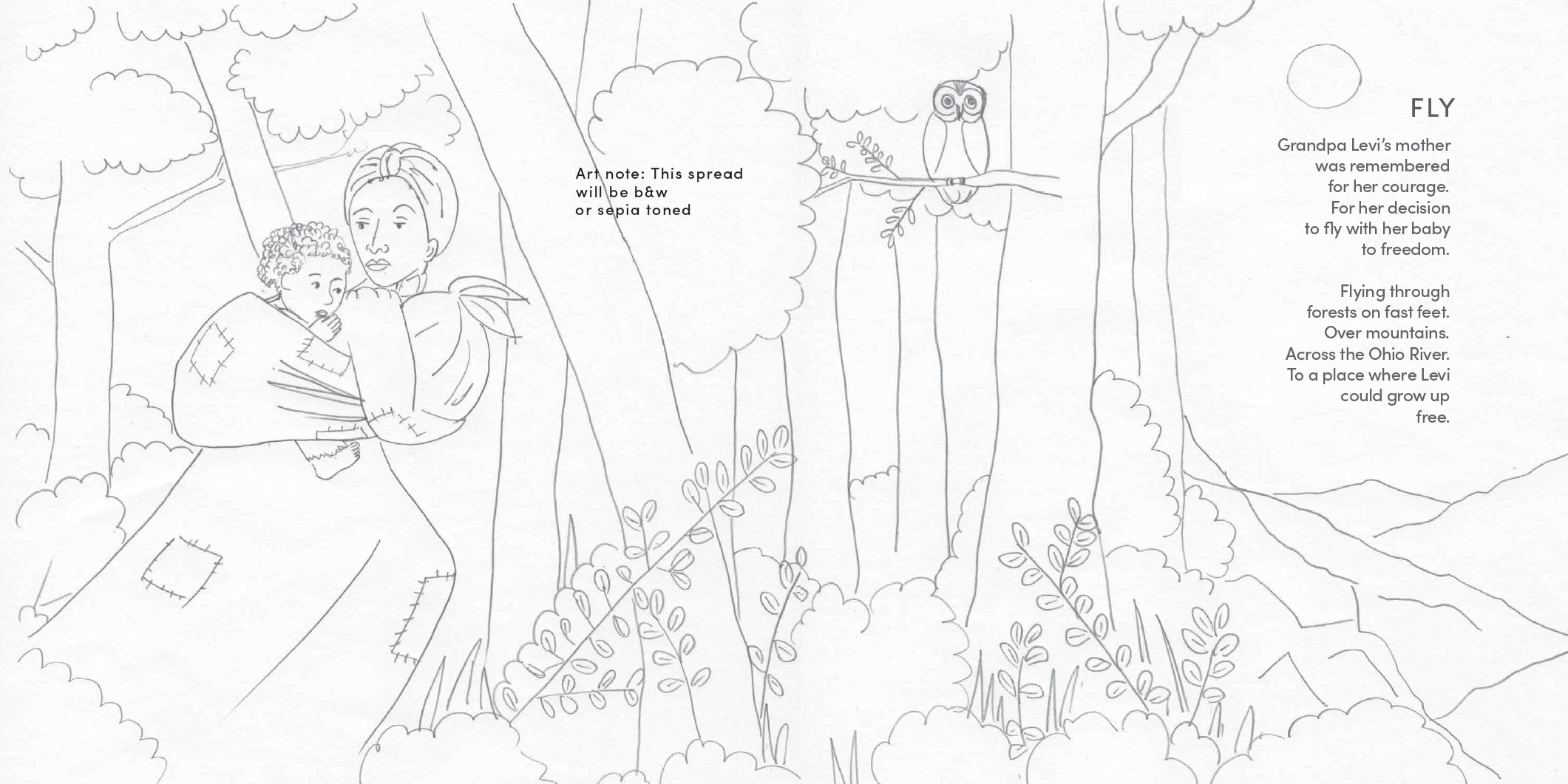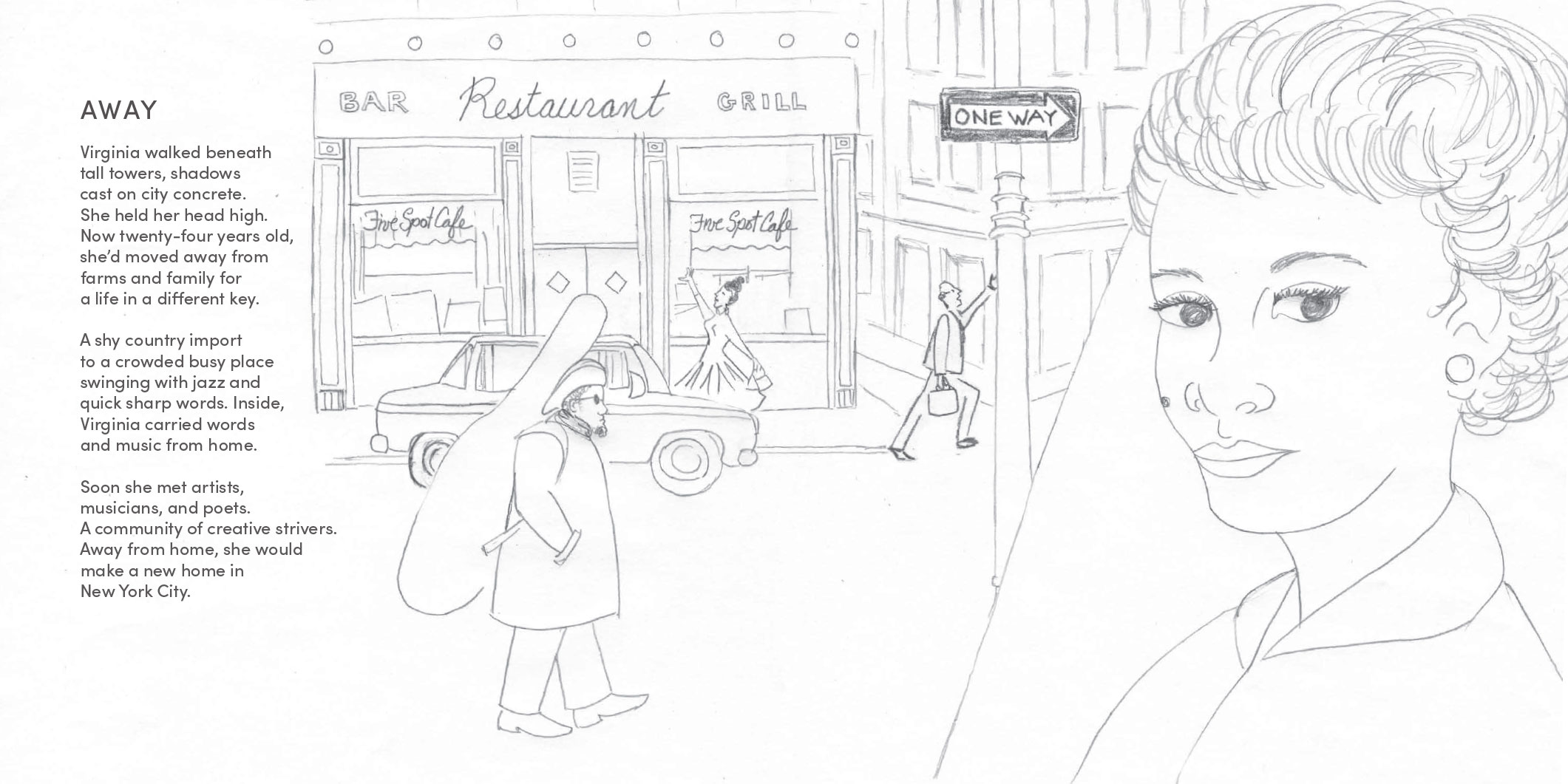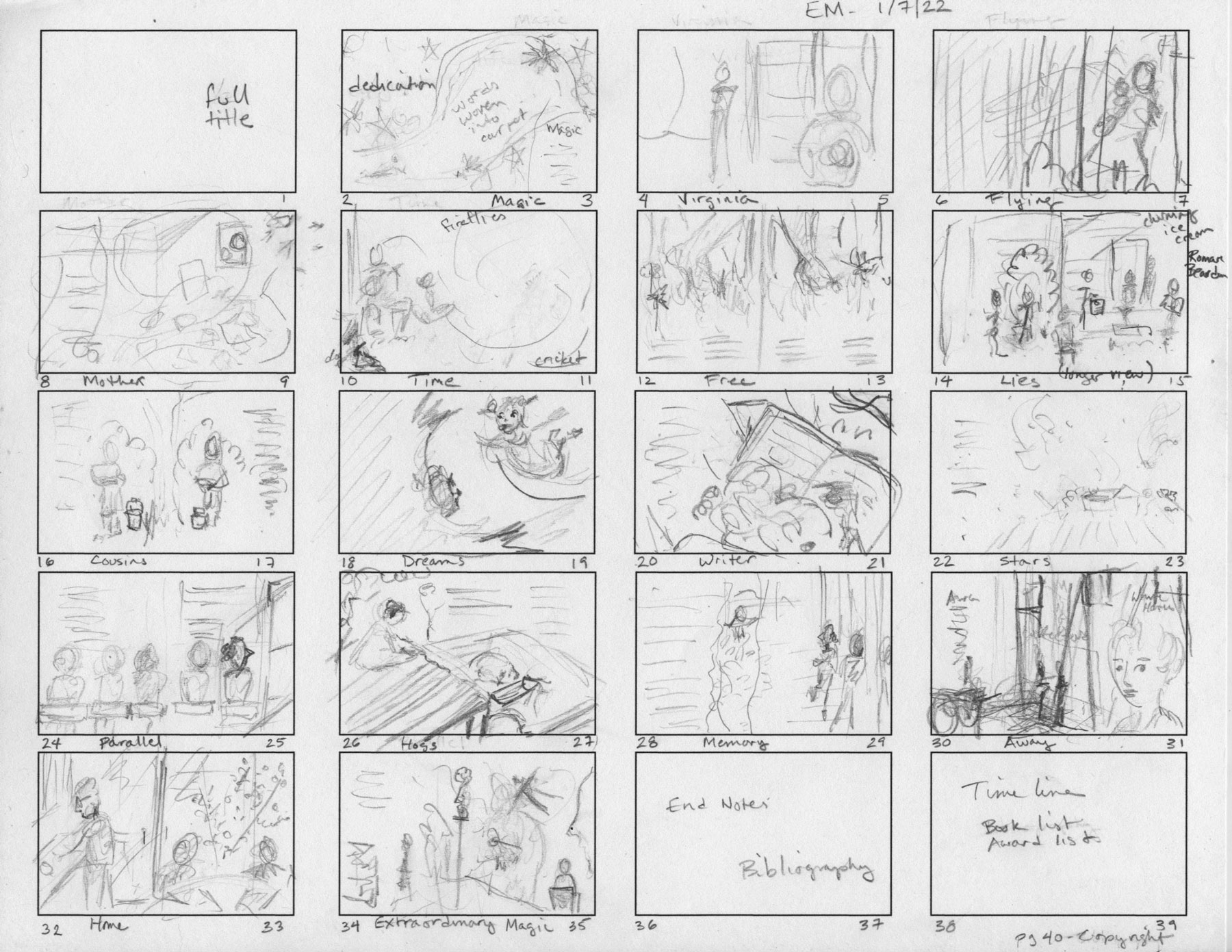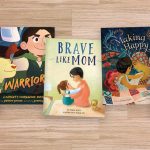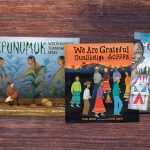Each Nina Crews picture book beckons young readers to explore and promises them that ordinary moments can be transformed into the exceptional. Crews is especially known for her dynamic illustrations; her more recent titles play with the imaginative possibilities of digital collage, while her earlier picture books feature distinctive photocollage images. With her forthcoming picture book biography Extraordinary Magic: The Storytelling Life of Virginia Hamilton (Christy Ottaviano Books) publishing January 9, 2024, Crews adds yet another captivating element: She captures Hamilton’s essence by portraying the life of the beloved children’s book writer in a series of interconnected poems. Together with Crews’ distinctive artwork, each poem celebrates a key piece of Hamilton’s experiences and inspirations, ultimately conveying the remarkable nature of her storytelling life to a new generation of readers.
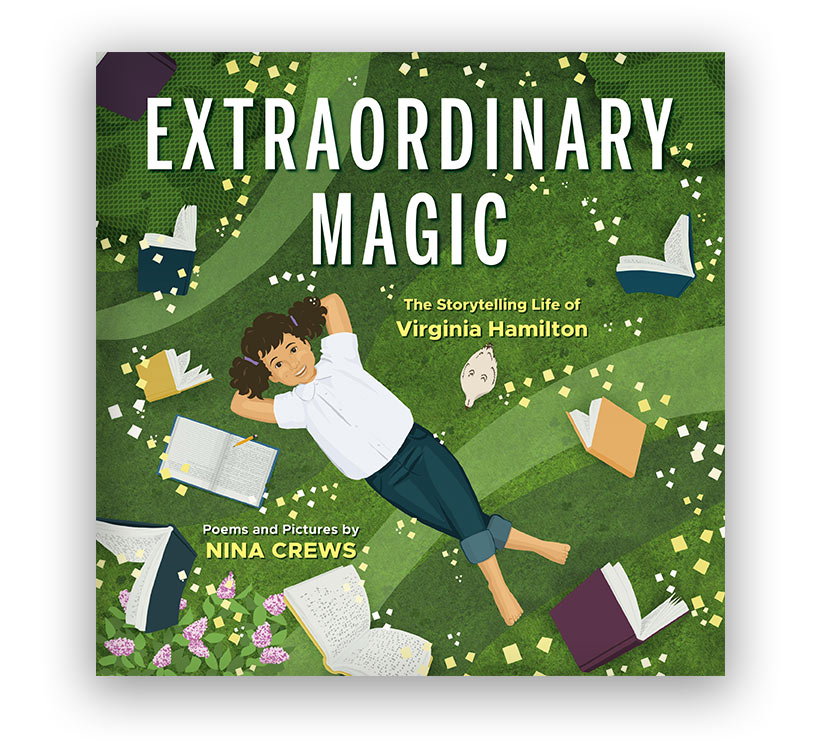
Here Crews talks with Lisa Bullard, discussing why she chooses to illustrate with collage, sharing her thoughts about what Hamilton’s books offer today’s young readers, and suggesting innovative activities for students to try themselves.
I was fortunate enough to be allowed to see an advance copy of Extraordinary Magic. What inspired you to share Hamilton’s story with young readers?
My hope is that children will get excited about Hamilton’s books and be inspired to write stories of their own. Hamilton’s career began at a time when there were just a handful of Black creators in the field. Her books were groundbreaking. Her success was path-making. And so many of her books still feel fresh and relevant.
I’d loved her books as a child and returned to her work when my son was in grade school. Then I read some of her speeches and saw how her childhood and family life were richly woven into her writing. Exciting!
And there were other connections for me. While they knew each other only slightly, Hamilton and her husband, Arnold Adolf, were contemporaries of my parents (children’s book creators Donald Crews and Ann Jonas), and both were interracial couples in children’s literature. Both couples met in New York City. Both couples loved jazz. My first editor, Susan Hirschman, was Hamilton’s editor on several books and a friend to both of us.
Sketches of spreads from Extraordinary Magic: The Storytelling Life of Virginia Hamilton
Do you have a favorite Hamilton book to recommend to young readers?
There are so many great Hamilton books! Longtime favorites are Zeely and M.C. Higgins, the Great. A newer favorite is Cousins. In this book, and in many others, Hamilton makes space for her characters to express negative feelings like jealousy, selfishness, or anger without judgment. She leaves room for the characters to figure things out and get to a more positive place on their own. The People Could Fly and Her Stories are folklore classics and fun for any kid who loves myth and magic. I adore Arilla Sun Down. It’s a more challenging read than many of her books but filled with brilliant imagery and deep emotion.
You tell Hamilton’s story through a series of poems, each one “anchored” by a single word. How did you arrive at this approach?
I tried a few different approaches for this book before settling on poetry. It is a beautifully concise way to tell a story and an active way of reading. I didn’t have a ton of information about Hamilton’s childhood, mostly anecdotes that she shared in her speeches and essays, so establishing a chronologically accurate narrative was going to be challenging. By aggregating important facts and stories around each “anchor word,” I was able to be generally accurate without locking the timeline in too rigidly. The anchor words gave the poems shape without relying on rules like rhyme and meter. The rules I did follow were that the word appear at least once and that the poem tell the reader something about Hamilton’s life. I worked from a list of words and concepts that stood out to me from her speeches and essays, and that I thought would convey her story.
The book makes it possible for students to examine Hamilton’s life in “word-sized” pieces. Can you suggest a related activity for educators to use in their classrooms?
I like your phrase “word-sized pieces”! If I were in the classroom, I might have students start with a name poem. We all have feelings about our names and can usually come up with other bits of information about them—nicknames, the meaning of our name, people we know or have heard of who share our name, and perhaps the names that we wish we had instead—all prime material for a story about who we are. Hamilton delighted in telling the story of her name, and this made it a great introduction for the book. I wanted the reader to know that she grew up on a farm, that she was a descendant of enslaved Black Americans, and that she was the youngest child in the family. I would ask the students to consider the stories that their names contain and the stories that they would like to tell about themselves.
If I were in the classroom, I might have students start with a name poem. We all have feelings about our names and can usually come up with other bits of information about them.”
The poem “Lies” in Extraordinary Magic says: “A good story doesn’t have to be exactly true.” What else would you add to a classroom discussion of that poem?
Hamilton talks about her family’s storytelling tradition in her acceptance speech for Sweet Whispers, Brother Rush, calling her relatives “plain out-and-out liars at times.” The concept appealed to me because it asks us to consider the nature of truth. A sophisticated concept, but one that matters deeply at any age. While calling someone a liar is usually a criticism, Hamilton prefaced her comment by stating that she was lucky to have grown up around amazing storytellers. The alterations and exaggerations made the stories fun. The truth was in the values that were communicated. I’d love to be a fly on the wall in the classroom as students discuss this poem.
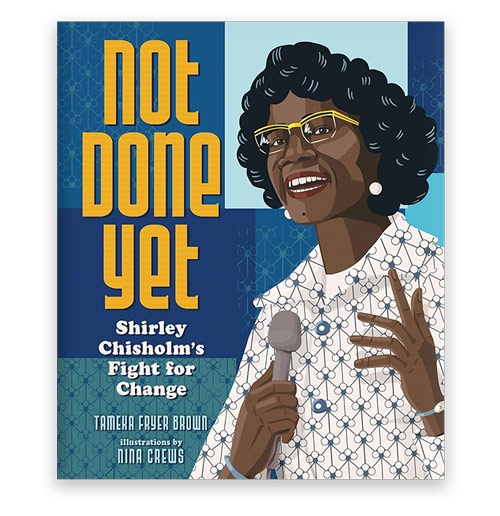
For books like this and Not Done Yet: Shirley Chisholm’s Fight for Change (written by Tameka Fryer Brown, Millbrook, 2022), it’s clear you have to do a great deal of research. What is that process like for you?
I enjoy doing research and truly get lost in it. I collect so many more facts and images than I use in the end. This is partly because I’m having so much fun looking and learning, but also because I don’t know what I need at the outset. Creating any piece of writing or art involves deeply imagining the subject. To really be able to tell or illustrate a nonfiction story, I need to know an awful lot.
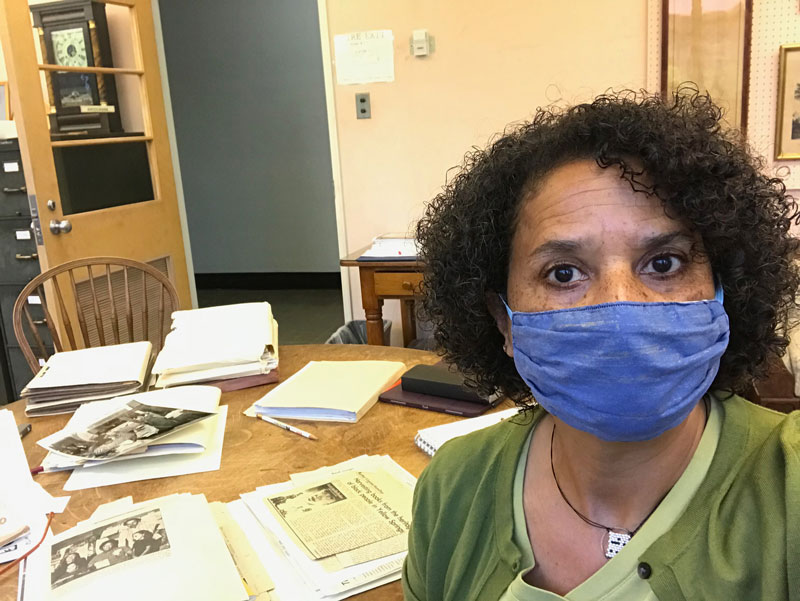
Creating any piece of writing or art involves deeply imagining the subject.”
Do you have any suggestions to help students with the research they need to do for school projects?
One thing I found very helpful as I researched was to create a timeline. I built the timeline in Microsoft Excel, but pencil and paper would be fine, too. I organized it with columns for different years and rows below for events in the person’s life, important historical events, birth and death years of other family members, popular music, or anything else that I thought might be useful to me as I worked. It was a handy way to keep track of information and so much better than trying to keep everything in order in my head.
Thumbnail sketches of Extraordinary Magic: The Storytelling Life of Virginia Hamilton
What would you like to share with young readers about your childhood?
Art was part of our family bond. My parents valued the handmade and homemade. They appreciated the time and thought spent on creating things and were ready and interested in giving my sister and me materials, tools, or advice for anything we were working on. They met us at our level with assistance with making doll clothes, Christmas gifts, and school projects while also showing us the art and design that they loved. We had many weekend trips to art museums, definitely not my favorite thing back then, but I love it now.
I could always count on my mother to compliment anything I made and my father to offer a suggestion of how it might be just a little bit better. It made a good combination, I suppose. I felt valued, and I also understood that I could improve on what I’d done. Looking back at my school years, I would say that the teachers who combined those two approaches were the ones I learned the most from.
What draws you to working with collage, which you use to create your distinctive illustrations?
When I was working on my first book, One Hot Summer Day (Greenwillow, 1995), I was thinking a lot about the books of Ezra Jack Keats and collage art by Romare Bearden and Hannah Höch. Collage felt like New York City with its hodgepodge of old and new, lost and found, and mix of people from all over the world. Collage felt fresh and honest with lots of room to play, a shorthand in which everything gets pushed up against each other in unexpected ways.
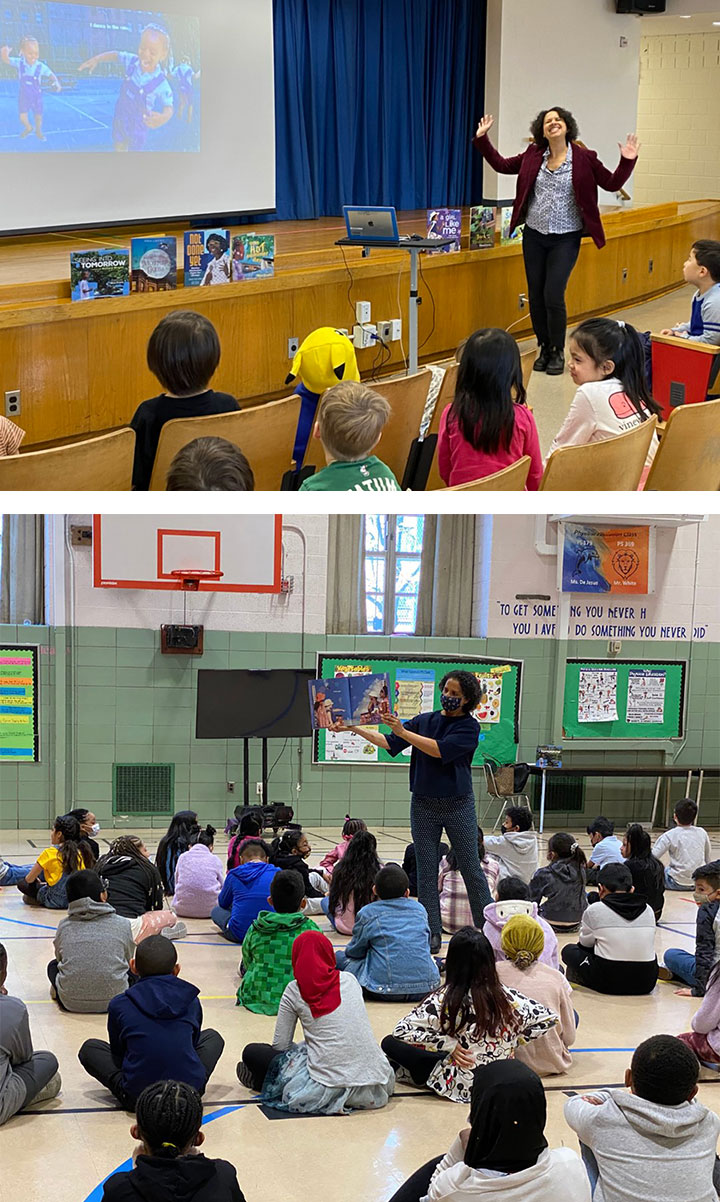
Can you share some thoughts for educators about incorporating collage into their classrooms?
One thing I love about doing collage projects with children is that it frees them from worrying too much about their drawing abilities. Younger children tend to be more comfortable with what they draw, but as they get older, they start getting frustrated when they can’t make their pictures match their expectations. The limitations of collage free them to take a different approach, and they often come up with fun, surprising images. It can be helpful to start with a theme or subject that they feel comfortable with—a face, a car, a dog, or a house. Then hand out the paper!
One thing I love about doing collage projects with children is that it frees them from worrying too much about their drawing abilities.”
What’s your best advice for young readers who want to be artists and/or writers?
A common piece of advice to an aspiring writer is to read, and I couldn’t agree more. Likewise, an aspiring artist should look at art. Whatever your creative passion, spending time with work created by others is very important. Equally important is practice, practice, practice. Art and writing are learned by doing. Notebooks and sketchbooks are spaces to practice, to play, to figure out what you like and what you don’t.
What’s your favorite part of creating books for young people?
Before I started creating picture books, I thought I wanted to work in the film industry (another way of telling stories). I quickly learned that film jobs are quite specialized and that whatever I did, it would only be a small piece of a larger project. Picture books give me so much creative independence, and I get to do more than one job. One day I may spend writing and the next might be drawing or photographing. And at the end of it all, I have a finished work that I care deeply about; a book that began as an idea in my head and now exists in the world. It is always an amazing feeling.
At the end of it all, I have a finished work that I care deeply about; a book that began as an idea in my head and now exists in the world. It is always an amazing feeling.”
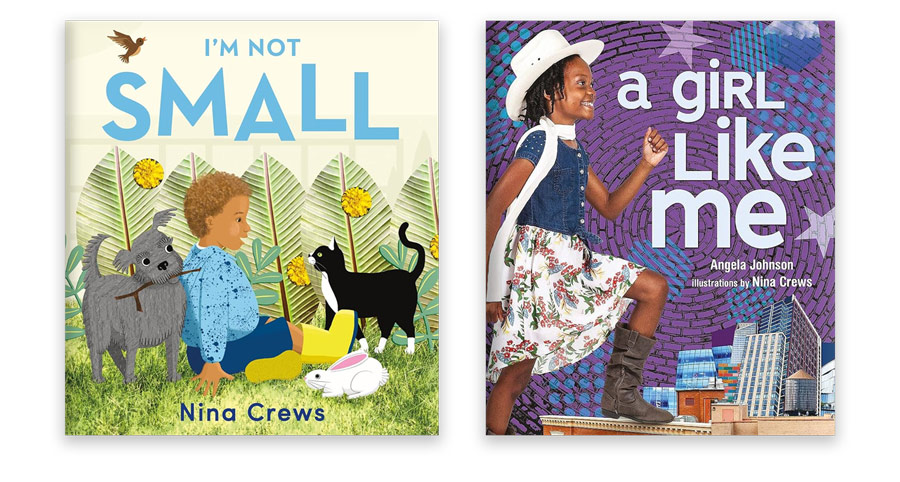
What would you like to tell your fans about your other forthcoming books?
In 2024, there will be a board book edition of I’m Not Small and a Spanish-language paperback edition of A Girl Like Me.
What are the best ways for readers to connect with you or to follow you on social media?
I am most active on Instagram, @crewsnina, and on Facebook, Nina Crews Children’s Books, so please look for me there!

